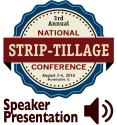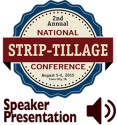Advertise Follow Us
Precision Agriculture
Connect to tips and information about precision technologies that can help strip-tillers do a more accurate job with planting, spraying, fertilizing, scouting, soil testing, mapping, irrigating and various other farm tasks.
ARTICLES
Pre-Season Maintenance Helps Strip-Tillers Avert Disaster
Good working relationship between strip-tiller & dealer key to finding & fixing yield-robbing equipment problems
Read More
Press Release
Thune, Warnock Reintroduce the Promoting Precision Agriculture Act
Legislation would facilitate the adoption of precision agriculture technologies
Read More
How a Strip-Tiller Can Save $116,000 Annually with Precision Technology
Conservative assumptions show a first-year 95% ROI on full farm adoption of precision ag tools. Sticker shock may apply, but you can bank returns in year two, says Iowa farmer & dealer.
Read More



















